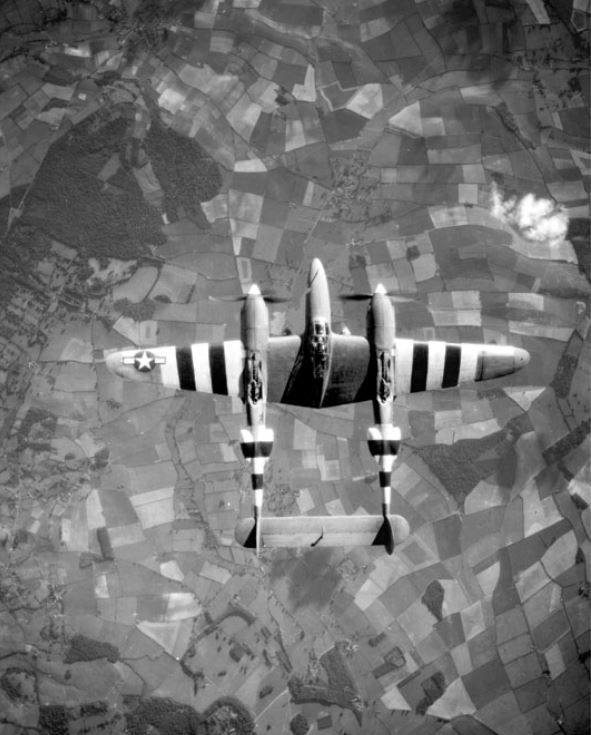P-38 Lockheed Lightnings
From Our Contribution
Remarks
Designed to a 1937 specification calling for a high-altitude interceptor with heavy armament and a high rate of climb, no American engine then available produced sufficient power to satisfy the requirement, and designers Hall Hibbard and Kelly Johnson designed the P-38 around a pair of liquid-cooled in-line Allison engines, turbo-supercharged for high-altitude performance. For the airframe they adopted a unique “twin-boom” configuration, in which pilot and armament were contained in a central pod and the engines were mounted in mid-wing nacelles extending back into tail booms that mounted twin rudders and were joined by a horizontal tail.
The P-38 was also used as a bomber-pathfinder, guiding streams of medium and heavy bombers, to their targets. Used in the aerial reconnaissance role, the P-38 accounted for 90 percent of the aerial film captured over Europe. The P-38 was used most successfully in the Pacific Theater of Operations and the China-Burma-India Theater of Operations as the aircraft of America's top aces. In the South West Pacific theater, the P-38 was the primary long-range fighter of United States Army Air Forces until the introduction of large numbers of P-51D Mustangs toward the end of the war.
The Lightning’s long range and high ceiling made it a natural for photo-reconnaissance, and cameras replaced guns in the F-5 version, which ranked second only to the British Mosquito as a workhorse of Allied photographic intelligence.
- Crew: one
- Length: 11.53m
- Wingspan: 15.85m
- Height: 3.91m
- Empty weight: 5,806 kg
- Max takeoff weight: 9,798 kg
- Powerplant: 2 x Allison V-1710-113-V 12 Liquid cooled engines. One left hand rotation, one right hand rotation
- Maximum speed: 666 km/hr
- Range: 2,100 km
- Service ceiling: 13,000m
- Armament
- Guns: 1 x Hispano 20 mm canon; 4 x 0.50 Browning machine guns, 4 x M10 three tube 112mm M8 rocket launchers
- Bombs: 4,000 kg
